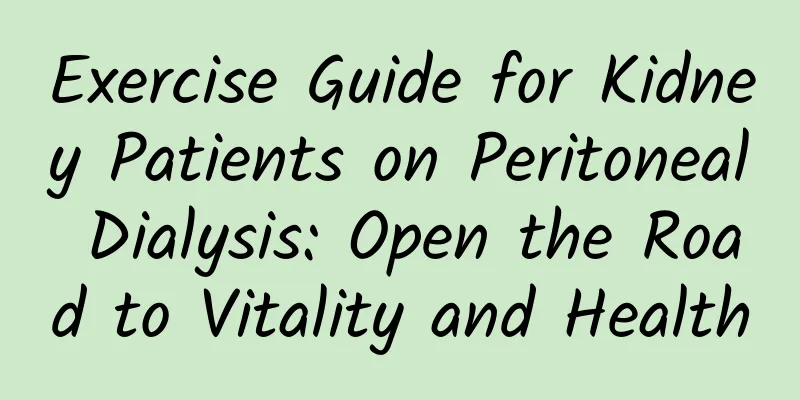Let's exercise our lungs

|
This is the 4796th article of Da Yi Xiao Hu The rampant spread of the novel coronavirus, the outbreak of influenza, and the recent panic caused by mycoplasma infection have greatly increased people's attention to the respiratory system. On the basis of taking good protection, what can we do to better resist risks or recover health faster? Next, the editor recommends several breathing exercises to you: 1. Abdominal breathing When inhaling, lie on your back or sit comfortably, place one hand on your belly button, relax your whole body, breathe naturally first, then inhale slowly, expand your belly as much as possible, make your belly bulge, and keep your chest still. When exhaling, your belly naturally concave, and pull inward toward the spine, and keep your chest still. Contract your belly as much as possible, exhale all the waste gas from your lungs, repeat this cycle, and keep the rhythm of each breath consistent. It is advisable to exercise for 30 minutes every day. 2. Pursed lip breathing Inhale calmly through your nose, then purse your lips as you exhale, and exhale slowly. Count silently to 1 and 2 while inhaling, and to 3, 4, 5, and 6 while exhaling. If possible, count to 7 and 8, so that the ratio of inhalation to exhalation reaches 1:2-1:4. Pursed lip breathing can prolong the exhalation process, reduce the respiratory rate, and reduce the work of breathing. It can also increase the amount of fresh air inhaled, relax the muscles of the whole body, improve the patient's hypoxia, and reduce carbon dioxide retention. At the same time, pursed lip breathing can also exercise the muscles of the chest wall, improve the vitality of the abdominal muscles, reduce oxygen consumption, and reduce and improve diaphragm fatigue. 3. Blow up a balloon Take a deep breath, hold your breath for a while, and slowly blow air into the balloon until all the air you just breathed in is blown out, or until you can’t blow anymore. Do this 3-4 times a day until you don’t feel chest tightness, palpitations, or other discomfort. 4. Breathing trainer Sit or lie down, hold the breathing trainer in one hand, hold your mouth in the other hand, and exhale slowly, then close your lips and hold your mouth, inhale slowly through the mouth at a steady pace, the float of the breathing trainer will be sucked up, when the float reaches the specified scale, pause breathing, let the float stay, keep it as long as possible, and then exhale slowly through the mouth. After completing each breathing function exercise, you should rest for a few seconds and then repeat the training. Generally, each training lasts 10 to 15 minutes, 3 times a day. 5. Active cycle breathing technique This is a specific set of breathing training methods, which is a common method of airway clearance technology in breathing training. It helps patients to discharge sputum by opening the airway, fully expanding the alveoli, and increasing the air vibration in the airway. Active cycle breathing technique consists of three key parts: breathing control, chest expansion exercise, and forced exhalation technique. The training order and frequency of the three steps are not fixed and can be flexibly adjusted according to the patient's condition, but they are indispensable. Active cycle breathing training can be done 2-3 times a day, each time for 10 minutes. (1) Breathing control That is abdominal breathing, which is used to relax tense respiratory muscles and avoid airway spasm. When doing it, the patient can sit on the bed, lean forward slightly, or sit on a chair. The specific method is: take a deep breath through the nose and exhale slowly through the mouth, the abdomen bulges when inhaling, and the abdomen sinks when exhaling, and control the inhalation and exhalation time ratio to 1:2~3. Try to relax yourself in this step, try to slow down your breathing, put your hands on your abdomen when doing it, and feel the changes in the bulge and sink of the abdomen. (2) Chest expansion exercise The deep breathing exercise that focuses on inhalation is used to loosen secretions, fully expand the chest and lungs, and improve the strength of respiratory muscles. The specific method is: take a long and slow breath through the nose, hold your breath for 3 seconds at the end of inhalation, and then exhale like a sigh. Inhalation is an active exercise, and the active inhalation volume is larger than the normal breathing volume, which increases the airflow in the peripheral airways, and then completes the passive exhalation action, which helps to re-expand the lung tissue. (3) Forced exhalation technique The function is to expand the collapsed airway, increase the airflow of the blocked but not closed airway, and move and clear the secretions. The specific method is: divided into two small steps, the first small step: normal inhalation, and then forcefully exhale quickly and for a long time. This action may cause coughing; the second small step: first take a deep breath, and then exhale forcefully and briefly. Each cycle can be done 1-2 times. If you can hear the sound of phlegm in the throat when exhaling, then cough, the expectoration effect will be much better. The above breathing exercises can be used by patients with respiratory diseases or those undergoing surgery. However, in order to better ensure the patient's perioperative safety and reduce lung complications, from the perspective of anesthesiologists, we also recommend that you: 1. Quit smoking Any rehabilitation program will focus on smoking cessation because it is the most beneficial treatment for long-term outcomes for any patient with respiratory disease. Smoking cessation can also improve collective autoimmune function, reduce the incidence of postoperative pulmonary complications, and speed up recovery. For smokers, the longer they quit smoking, the better the effect. The best time to quit smoking before surgery is at least 8 weeks. 2. Good oral care Good oral care can reduce the oral bacterial load and reduce the incidence of postoperative pulmonary complications. Oral care includes preoperative dental consultation, dental hygienist treatment, and cleaning the tongue with a toothbrush. It is recommended to adopt the best oral hygiene practices recommended by the American Dental Association for the general population: brushing twice a day, flossing daily, and regular dental health checks. For your better recovery, we will also use a variety of analgesic methods to provide you with postoperative analgesia. Effective analgesia can fully control postoperative pain, ensure that you can better complete breathing exercises, and reduce the occurrence of lung infections. Let us work together to protect your health! Author: Shanghai Geriatrics Center Wu Ru Wang Shuxin Reviewer: Fang Hao |
Recommend
How to clean Basa fish most cleanly? Is it harmful to eat too much Basa fish?
In daily life, some friends don't know much a...
Why do women feel hot when they wake up in the morning?
As we all know, the temperature is obviously lowe...
There are three common types of eye injuries, and the emergency treatment methods for different types are different!
Author: Ma Zhizhong, Chief Physician, Peking Univ...
Treatment for diarrhea in the third month of pregnancy
After pregnancy, many pregnant friends' bodie...
[National Cancer Prevention and Treatment Week] How to prevent and treat these 5 common infections after colorectal cancer surgery? This article will teach you!
It is reported that despite strict aseptic measur...
Why is the gestational sac elongated?
The shape of the gestational sac in every woman&#...
Why does corn turn yellow after cooking? How many carbohydrates does corn contain?
Corn is a sweet and delicious grain crop. It can ...
Why is my stomach growling when I am four months pregnant?
Women must take good care of their bodies during ...
Can I get the HPV vaccine during my period?
We all know that the HPV vaccine has been very po...
What causes women to have excessive body hair?
Generally speaking, women have much less body hai...
What are the symptoms of functional uterine bleeding?
Functional uterine bleeding is a common gynecolog...
Where do earwax, eye mucus, and nose mucus come from? They are actually good things...
Expert of this article: Meng Yao, Doctor of Medic...
Belly enlargement before menstruation
Many women feel that their belly gets bigger befo...
How do women get infected with HPV?
HPV, also known as human papillomavirus, is a vir...
How long does it take to recover from a hysterectomy?
Once the uterus is removed, it will undoubtedly h...









